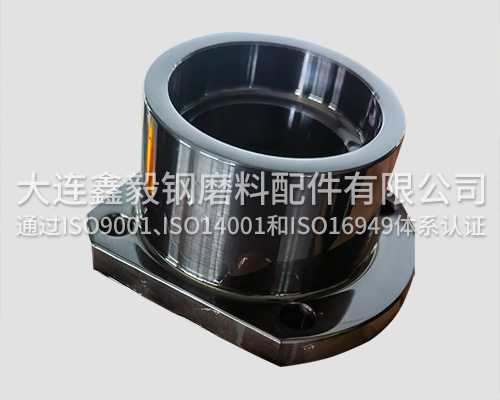Welcome to the official website of Dalian Xinyi steel abrasive parts Co., Ltd!
Dalian Xinyi steel abrasive parts Co., Ltd
Contact: Manager Zhang
Telephone: 0411-39630390
0411-39569620
mobile phone:13795133932
website:en.dlxyg.com.cn
Address: No. 10, Shengsheng Second Road, Dalian Economic and Technological Development Zone
Office worker: Quanshui P3, Ganjingzi District, Dalian
Dalian blackening surface treatment is a simple, economical, and effective metal surface treatment technology widely used in various industrial fields. By strictly controlling the process parameters, the quality and performance of blackening treatment can be ensured. With the advancement of technology, blackening treatment technology will continue to improve and innovate, providing more options for surface treatment of metal parts.
The chemicals used in the blackening process, such as sodium hydroxide and sodium nitrite, have certain corrosiveness and toxicity. Therefore, the following precautions should be taken during the operation: protective measures: operators should wear protective gloves, masks, and goggles to avoid direct contact with chemical substances. Waste liquid treatment: The blackened waste liquid should be neutralized to avoid direct discharge and environmental pollution.
What is the relationship between the thickness of the oxide film treated with blackening in Dalian and its corrosion resistance?
The thickness of the oxide film after blackening surface treatment has a significant impact on corrosion resistance. Generally speaking, within a certain range, an increase in the thickness of the oxide film will enhance corrosion resistance. The specific relationship is as follows:
Oxide film provides barrier protection: The oxide film formed by blackening treatment is a dense protective film that can isolate the metal substrate from external corrosive media. An increase in thickness means that the path for the corrosive medium to penetrate the oxide film and reach the metal surface becomes longer, thereby slowing down the corrosion process. For example, in humid air, thicker oxide films can more effectively prevent oxygen and water vapor from coming into contact with metals, reducing the possibility of metal rusting.
Enhance coverage of the substrate: As the thickness of the oxide film increases, its coverage of the metal substrate surface becomes more complete, which can better fill the micro defects and pores on the metal surface, reducing the risk of corrosion caused by exposure in these areas. This can avoid the formation of localized corrosion in the battery, thereby improving overall corrosion resistance.
Improve the integrity and stability of the film layer: A properly thick oxide film structure is more stable and less prone to cracking, detachment, and other issues under external factors such as mechanical friction and chemical erosion. A complete and stable oxide film can continuously provide protection and effectively resist the invasion of corrosive media.
However, the thickness of the oxide film is not necessarily the thicker the better. When the oxide film is too thick, problems such as increased brittleness of the film layer and decreased adhesion with the substrate may occur, which can actually reduce corrosion resistance. Meanwhile, excessive oxide film may affect the dimensional accuracy and surface properties of the workpiece in some cases.
Blackening treatment, also known as oxidation treatment or bluing treatment, is a chemical treatment method. The basic principle is to generate a dense oxide film on the metal surface through chemical reactions. This oxide film is mainly composed of iron trioxide (Fe ∝ O ₄), which has good corrosion resistance and wear resistance.
Before blackening treatment, the metal surface needs to be cleaned and degreased to ensure that the surface is clean and free of impurities. This is a prerequisite for the uniform formation of oxide film. Immerse the metal in a blackening solution, and the oxidant in the solution reacts with the surface of the metal to produce ferric oxide. The commonly used components of blackening solution include sodium hydroxide (NaOH), sodium nitrite (NaNO ₂), and water. After the formation of the oxide film, subsequent sealing treatment (such as oil immersion or wax coating) can further improve the density and corrosion resistance of the film layer.

![]()
Office address: P3 Quanshui District, Ganjingzi District, Dalian
Factory address: No. 10, Shengsheng Second Road, Dalian Economic and Technological Development Zone
Copyright © http://en.dlxyg.com.cn/ 大连鑫毅钢磨料配件有限公司 Specializing inDalian sandblasting,Dalian shot blasting,Dalian blackened surface treatment,Welcome to inquire!
辽ICP备18004327号 Powered by Clouds platform Technical Support:Joint enterprise Era
 | Wechat scan Pay attention to our timely information |